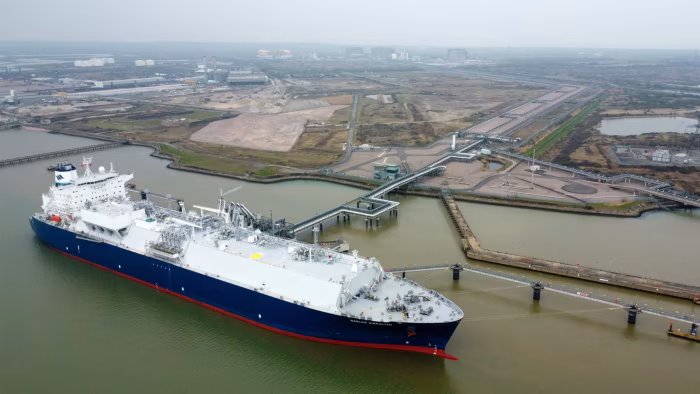Stay informed with free updates
Simply sign up to the UK energy myFT Digest — delivered directly to your inbox.
The UK’s national energy system operator has warned of the risk of gas shortages within five years as the country becomes more reliant on imports of the fuel, raising questions over the government’s energy strategy.
NESO said there was a risk of gas supply shortages in a scenario where Britain moved to lower carbon energy slower than planned, and that the system might not cope with the loss of a major piece of infrastructure.
While supplies were expected to be sufficient to meet demand under normal weather conditions, stress testing for poor conditions had revealed an “emerging risk to gas supply security” in the early 2030s, it said.
“In scenarios where all gas supply and network infrastructure are operational (intact), this risk is evident only where decarbonisation is slowest,” NESO found in a report published on Wednesday evening, hours after the Budget.
“However, in the unlikely event of the loss of the single largest piece of gas infrastructure, gas supply falls short of demand expectations for all pathways in 2030-31,” it said.
Production from the North Sea has been falling as the basin declines from its heyday in the 2000s, while terminals to process gas are being shut down or will be closed in the coming years.
Ministers on Wednesday confirmed plans to ban exploration licences for new oil and gasfields in the North Sea. They will allow companies to drill close to current fields using existing pipelines and drilling rigs.
But industry has warned that the measure will do little to boost production unless the government removes the windfall tax on oil and gas companies, which it left unchanged in the Budget.
While many experts expect plenty of gas on global markets in coming years, global supplies are highly vulnerable to disruption, as illustrated when prices soared in 2022 following Russia’s full-scale invasion of Ukraine.
Britain also needs to have the infrastructure in place to import, deliver and store gas and, when needed, use it to generate electricity.
The UK has historically relied on terminals and pipelines taking gas from the North Sea. But it is now more reliant on import terminals in Wales and southern England, which can receive shipments of liquefied natural gas from around the world.
Ministers want to cut gas use in order to lower carbon dioxide emissions, and are supporting the development of new wind and solar farms and encouraging people to buy heat pumps instead of gas-fired boilers.
But even if those steps happen at the desired pace, gas is still required to guarantee energy supply on cold windless days, meaning the infrastructure needs to remain open even if it is used far less often.
“Peak day gas demand is declining more slowly than annual demand,” NESO said.
The government has opened a consultation on financial support for industry so that it can keep infrastructure open for days of high demand, even if much less is flowing through it for much of the year.
“The key question for this consultation is therefore how to best provide insurance for low probability, high-stress scenarios,” the consultation said.
The Department for Energy Security and Net Zero said: “We are working with industry to ensure the gas system is fit for the future, including maintaining security of supply — which is paramount.”

